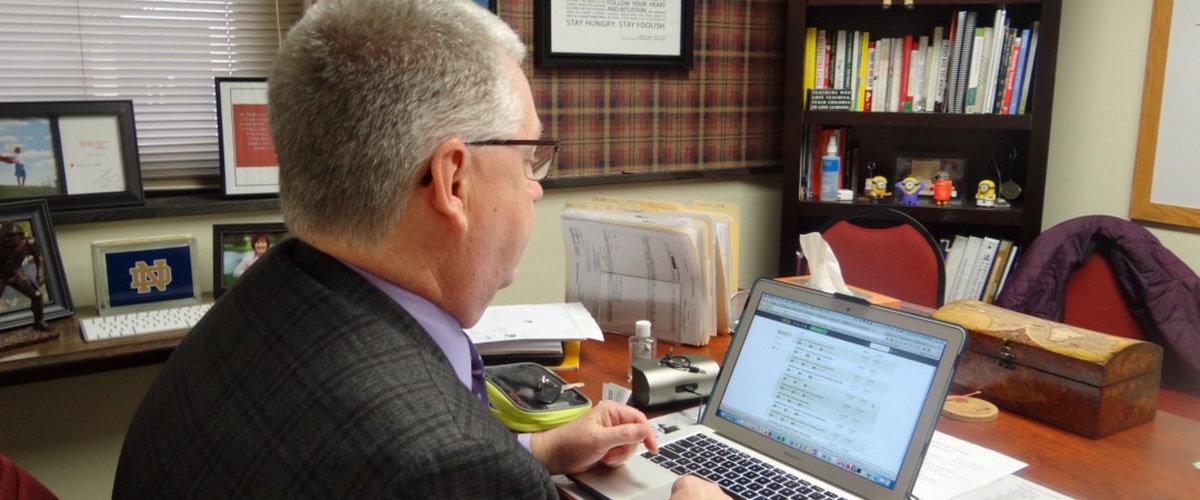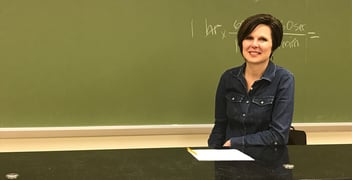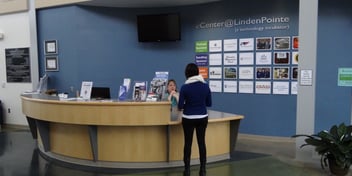Ving helps Boardman Local Schools improve the administrative and professional development communications.
About Boardman Schools:
Boardman Local Schools is a school district in suburban Ohio serving more than 4,500 students. The district, which employs 500 teachers and administrators, comprises four elementary schools, two middle schools and one high school.
Their Challenges:
- Used robotic telephone system for all parent and student communications; there was no way to know who listened to the phone message or not
- Relied heavily on email for internal staff communications; they had no insight into what information was being read or not
- Many new educational mandates being implemented, which caused training headaches for teachers and administrators
- Teachers were unable to adapt type of instruction to students with varying needs; students who needed more detailed instruction caused delays for students who didn’t
- Training on new Google Apps was cumbersome and took longer than people had time for
Solutions They Hoped to Find:
- More effective communications internally and externally with ability to send different media types
- Much better insights into who reads, views and understands information being sent
- Better able to determine how to communicate different messages with staff, students and parents
- Teachers can customize instruction for different students; able to send video instructions in advance of a project for kids that need more detailed directions
- More accountability for students and staff, as sender can see who did or did not view any part of a Ving
- Training on new Google Apps more easily accomplished easily through short videos
Discovering Ving
Like many K-12 school districts across the U.S., Boardman primarily relied on a robotics phone system to communicate with parents and students, according to Todd Smith, director of instructional technology for Boardman. Initially, Smith and Boardman’s other head administrators did not see a need for a communications platform like Ving, as they believed that the system they had in place was working fine. Additionally, with so many changes taking place in education, such as new student evaluations, common core instructional methodologies, and computer-based learning, the district did not want to implement yet another new program for teachers to learn.
Smith and his colleagues saw potential in what the platform offered and continued discussions with the Ving team. Eventually, they decided to test out a pilot program with Ving at one of the middle schools.
“We had some different Learning Management Systems we were trying out so we wanted to see how Ving would fit into that infrastructure,” said Smith. “We tried Ving for one year at Glenwood Middle and a few teachers started seeing value right away,” he said. “It’s great because of the different types of media that can be sent to students and parents, as well as because of the differentiation in instruction that it allows.” Boardman is also in the process of testing the integration of Ving with Google Classroom.
Creating Student Accountability
An example of how Ving enables teachers to accommodate students with different learning styles is that an instructor might have a project where having students watch a video prior to beginning the project would be useful – particularly students who need a more detailed or visual overview to help them get started. With Ving, teachers can easily send the video along with a few questions for students to answer that will help them pay attention to the important information. Teachers can then see who viewed the video and who completed questions, so they know who is ready to move on to the next steps of the project.
“This creates more accountability with students because teachers know that if a student is having trouble getting started, and they didn’t watch the video, then they didn’t follow instructions,” Smith said.
Yet some students may not need the extra detail, so the ability to send a video for those who need it means the other students would not be delayed by kids who need more instruction, he explained.
Data Insights Lead to More Effective Communications and Accountability
According to Smith, the kind of insight into who reads or views different parts of each Ving is invaluable as it helps teachers understand what types of communications work best for different types of projects, as well as helps them know if their instructions are being understood.
A couple of years after their initial deployment, Ving is now being used by some of Boardman’s school principals and administrators for communications with teachers and staff; while many teachers in grades 5-12 are also widely using it for supplemental instruction with students.
Smith himself is also using it to communicate with his own staff. “I personally love it because of all the different media types I can send,” he said. “It just allows me to communicate much more effectively with my team. And since it integrates with Google Apps, it’s great to be able to so easily pull files from Google Drive and add them to any Ving without any extra steps.”
Smith said he has also been using Ving to send out short videos to educators for professional development purposes, as well as to offer instructions on how to use new software and applications. He said that with Ving, staff productivity and efficiency with learning new applications improved vastly – and the people on his team were all appreciative of the ease with which they were able to receive and view the training videos.
Outcome: Creating a True Partnership
Moving forward, Smith says that Boardman Schools will likely see greater implementation of Ving in more classrooms and with more administrators, particularly with the guidance and responsiveness of the Ving team.
“Now that we have insights from Ving into how recipients interact with the different media and content types being sent, we can determine what other approaches might work better when there are parts of the communication that still aren’t being viewed,” said Smith. “With Ving, it’s much easier to make informed decisions and see improvements rather than just hope for the best – and the company’s team has been tremendously valuable in helping guide us with best practices approaches that we can borrow from their other clients. It’s a true partnership in every sense.”





Leave a Comment